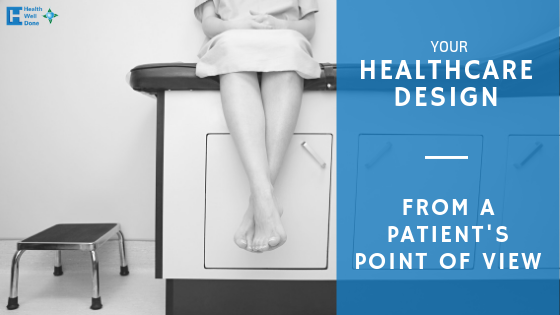“We work day after day not to finish things but to make the future better because we will spend the rest of our lives there.” – Charles F Kettering
When it comes to healthcare design and construction, it’s easy to be focused on numbers: how many square feet, the number of beds, the furniture that fits within the budget. And that’s how I used to be too, until I found myself experiencing the spaces I had helped create from a different perspective: as a patient.
I clearly remember approving the order for the reclining chairs in the cancer center. I had been assured by my furniture supplier that these chairs would be fine. The price was right and they fit the specification, so the order was placed. After they were delivered, those chairs never crossed my mind again.
Until I ended up in one after some surgery. As I sat down gingerly in one of these chairs, the nurse came over to me. “I’m just going to hold you up while I put it in recline,” she said, reassuringly. “These things go back pretty suddenly,” she explained.
“Suddenly” didn’t describe it at all, complained my recently stitched-together midsection as the back of the chair flung backward at light speed. If the nurse hadn’t have warned me, I probably would have ended up back on the operating table for more stitches.
Making an Impact
That’s when I realized that the decisions we make – architects, engineers, contractors, and project managers – have a big impact on the patient experience, even small ones like the reclining chairs.
Apart from the physical concerns like the chair example, there’s a growing body of evidence that shows that good healthcare design can help patients heal faster and experience less stress. A properly designed and executed patient-centered healthcare environment offers a safe, comfortable, and calming backdrop for healing to take place by allowing staff to do their jobs properly. And, even more importantly, they help patients concentrate on transitioning from illness to wellness.
Don’t get me wrong, focusing on budgets, schedules, and specifications is important. But equally important is the time needed to consider the circumstances and perspectives of patients, their families, and the staff that will be looking after them. That is what truly excellent healthcare design looks like.
Healthcare Design Tips

Good healthcare design takes many different needs into consideration to create the best patient-centered outcome.
Here’s how to get started:
- Foster a collaborative culture and empowered team, so that innovation and new ideas can be suggested, refined, and implemented successfully.
- Encourage your team to think about the patient’s journey: why are they at the hospital, how do they enter the facility, what do they see, hear, or smell, who do they need to speak to, where will they wait?
- Try to identify their needs throughout this journey. It may be a need to feel safe, so surveillance systems or attendant booths may be needed. Maybe they would want privacy, so will want sound barriers or private areas. Maybe they will be recovering from surgery and would like a comfortable chair to rest in that doesn’t throw them across the room when they recline.
- Document these journeys for each space the patient will experience and use the wisdom of collective thought from your team to come up with ways to improve the experience in each space.
Once you have this information, you’ll be on the right track for creating a healthcare design that isn’t just done, but well done. Taking the patient’s needs into account is part of the Healthy Patient principle of my Health Well Done approach. You can read more about this in my upcoming book, Health Well Done: A Patient-Centered Management Approach to Building Healthcare Environments which will be available this Fall – sign up to be the first to hear when it’s released.







